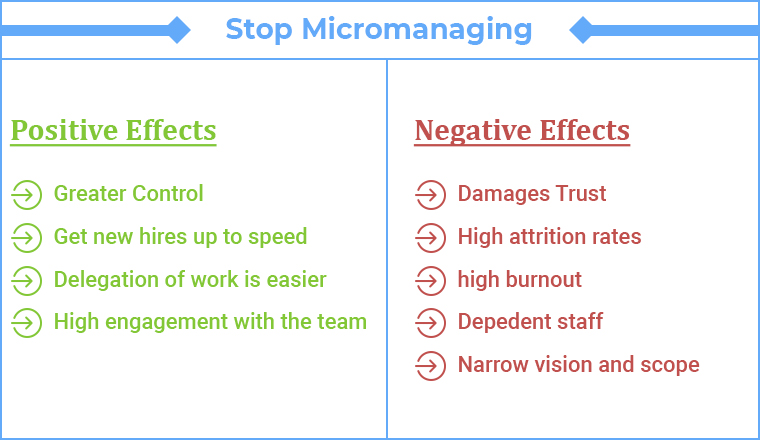
Managing a Software development team is a cakewalk or should we say it is moreover a daunting task. Well, considering both sides of the coin, it can be concluded that managing a software development team is definitely not that easy task. Specifically with programmers, when the project is at its peak of delivery or there is a lack of resources, the management gets fussy and the tasks get even more complicated. What should a business do at that point, they can consult experts and consider software development service providers.
There is no fixed set of steps or algorithms to manage software engineers. Most of the time, it is the same. Technical teams have different ways of working. Some work in conventional methods where once the development is done only then other procedures of software development start. Other is the Agile method. The Agile approaches place a different emphasis on how teams work. They burst with intense effort to achieve particular programming outputs that are aligned with client needs. Scrum, extreme programming, and feature-driven development are examples of Agile approaches.
Each of these approaches has some limitations as well as they have backups too. They may or may not be appropriate for a particular project so it depends on the project you are choosing. With this blog, we will be seeing all the possible ways how to manage a software development team, and aptly make use of the project management tool and systems to create an efficient collaborative environment.
1. Strategies to Manage a Software Development Team
In the process of software development, we need to understand how managing software teams can add efficiency to this process. Thus we have defined a set of steps that has worked out for others and hence we have a well-crafted method for businesses to implement their business. Let us start with it step by step
1.1 Create a Roadmap of Goals and Expectations
The first step of any software development process is Information gathering. The gathering of requirements is often the first phase of a software development project. Requirements are the minimum standards that a product must fulfil in order to be labelled as a successful project.
When you know what the client wants, the process of achieving goals becomes easier. Requirements are critical in setting your overall project goals. Thus the need of knowing the requirements at the start is of extreme importance. You’ll very certainly have additional objectives as well. Once the requirements are set, it’s time for understanding the goals and objectives that the software development team should meet them.
In addition to goals, it is critical to identify how the technical team will achieve them, and whether the emphasis will be on quick or high-quality outcomes.
1.2 Schedule Regular Meets
Yes when you are up to a simple goal, there are one on one meetings as well as team meets. This team meeting will help you convey the objective very clearly without any manipulations. There is group meetings as well as one on one meeting between you and one team member of your team who reports to you. It is a dedicated time to check in with each other.
The meeting should be considered a safe space for your direct report to speak candidly about what is bothering them and what you can do to support them.
Taking such meetings regularly is one of the easiest ways to get to know your new team members. Such kind of team environment has a positive influence on the work they do. They are key how in managing software development teams.
Your role as manager may put you in the position of project manager as well, so asking your direct reports about their progress from last week and plans for this week and the next will help you guide the whole team on joint projects in an organized fashion.
1.3 Focus Quality Over Quantity
When you develop an application, there are so many things that you need to focus on apart from just delivering the app. When it is new, you need to add more developers to the software team so as to improve productivity and boost efficiency. This is a practice where they do not prefer less experienced people because that will slow down overall work. They want people who are well-experienced and acquainted with technology and the type of project.
The team’s performance is another important factor when it comes to the delivery of applications. Our focus is not just to deliver as many apps as possible but we also want quality as a focus to it. Realigning your team to focus on small tasks that can be completed in a few days or weeks is a better way to boost your developers’ productivity and quality. For any specific assignments or processes like coding, testing, and implementation roles to each team member. Ensure that the software developers on each team have a range of experience levels, including junior developers, mid-level, and senior developers.
1.4 Communicate Requirements Constructively
The process of Software development starts with understanding the project requirements. In many cases, a project’s requirements are meticulously documented, and you will see businesses taking care of stifling progress with intricacy and precise instructions. On the other end of the spectrum, some project requirements are so ambiguous that the finished product deviates significantly from initial expectations.
Needless to say, communication comes at its best to strike a balance between the two communication parties. You’ll also need to translate the project’s requirements into the framework provided by your software development methodology. Agile development methodologies, for example, avoid exhaustive requirements in favor of delivering a “minimum viable product” (MVP) and iterating later.
The challenge of working with remote and hybrid software teams that include independent technical talent should prioritize effective requirement communication. Effective requirement communication should be a top priority when it comes to maintaining and managing software teams. It is equally important critical to keep everyone on the same page when professionals are not in the same room.
As a result, refining your project’s requirements before they are finalized is one of the more efficient uses of your time as a manager.
1.5 Manage and Meet Deadlines
The cost is unrepairable when you take up an entire project for your clients or the organisation you work for. When the team is unable to deliver the final product within the timeframe specified, the unexpected loss of time effort, and money is incomparable. This happens and you tend to miss deadlines that can put you and your team at risk, and while these dates may be estimates rather than firm commitments, keeping track of them is critical to success.
If your team is in the middle of a sprint and realises that the scope of the work will not be completed by the original deadline, you can communicate this to all key stakeholders.
Using a project management system to stay on top of deadlines is also beneficial because not all tasks are assigned the same meaning you can keep track of multiple deadlines at once and understand how your due dates rank against one another.
1.6 Execute the Agile Culture
Agility is one of the main factors for businesses to collaboratively create apps. That is what Agile culture in the IT environment or app development promotes. In the software business, being agile requires a mindset shift that alters the way you think about software development. You must take the time to properly implement agile processes that are best suited to the needs of your team. Meetings should be planned and led in a productive manner. If you use Agile methodology, it requires a new paradigm shift in the way you approach software development.
Take the time to properly implement agile processes that are best suited to the needs of your team. Meetings should be well-planned and led. Additionally, you can also change the old practices if there are certain meetings whose approach has become obsolete. The goal is to become agile rather than to add processes to ‘ensure’ agility. A vertical agile process, as well as a software-centric approach, are essential.
If we were to define 4 characteristics of a good agile process it would be
Efficient collaboration and collective agreements to ascertain that the entire team is on the same page.
Collaborative assistance for everyone in the business
Trust and honesty are essential, and you should raise your concerns as soon as possible.
Understanding the scope of improvement and simultaneously working on it.
1.7 Stop Micromanaging

Everyone is aware of how micromanaging hits businesses differently. Many developers from the software companies start to leave their job because of suffocation due to micromanagement. Micromanagement is a way to keep an eye on each task meticulously. From an organizational perspective, it is obviously a great choice for businesses to keep an eye on tasks.
These steps may not test you in every step you take. But then there are so many steps that are taken to notify how each person is performing their tasks. You may easily irritate them if you try to participate in every decision, discuss every detail, or measure their working hours/minutes. As a result, the overall productivity is at stake and the business suffers.
There is a fine line between being actively helpful and micromanaging. Consider it from their perspective. Also, this has the potential to create a negative impact on the team, as well as hatred among the team members. Micromanagement is never needed if they perform their tasks well.
1.8 Do Active Listening and Communicate Proactively
Ever imagined that listening can be an important part of your day-to-day function? Well, it is as important as you communicate. Communication isn’t always as simple as asking a few questions. If this is the case, there are still a few things you can do to improve communication with your software development team.
As we know that communication is always a two-way thing. Many managers want you to actively listen to all your software development needs and as a team, you must understand the project’s ideas and implement them wisely to update the current status.
Therefore, it is said to communicate proactively and conduct unprompted checklists on individuals as well as whole teams. If you have transparent and effective communication, there are several other aspects that will fall in place. You will build meaningful relationships by demonstrating genuine interest in each individual and division of the software team. There won’t be any double efforts on a single task.
1.9 Seek Feedback
This is quite frequent for software developers to discover that some of the aspects of their project requirements are unreasonable. This means if they are building software on this basis it will be wrongly conceived, or otherwise sub-optimal. However, this is because they are tasked with carrying out the vision of another team, and their valuable insights are never considered or implemented.
While seeking feedback, make an effort to promote your software development team’s insights on what they think and perceive about the product. Invite them to provide feedback on the instructions they receive. This can include suggestions for changing or improving the project’s requirements. After the feedback, all the communication, observations, and concerns are shared with the stakeholders within your organization. This will build and establish a dialogue between them and your software team.
You can show your appreciation for their abilities by taking their feedback seriously and internally endorsing it. This is especially important for remote workers or independent tech talent who may wonder if their contributions are truly appreciated.
1.10 Explain the Business Value
If you are working with a business, it is important to analyze and understand what values its core business executes. Consider if it is a third-party company whose employees are not directly working with the business and must be familiar with the objectives, agenda, and other values too.
The technical team has short-term agendas, which means they just focus on technology and the project that they want to deliver. They must also be inlined with core business values and growth.
Assume they understand why a specific functionality is important. In that case, they will not only be able to do the job better, but they will also come up with interesting solutions that you would not have known about. Allow them to discuss not only the technology but also the business and see how much you can gain by working together as a team.
1.11 Get Access to Qualitative Metrics
The Agile teams always evaluate individual as well as team outcomes using accurate and relevant measures in any management situation. There are several factors or metrics that can be considered or covered in the software development process. In this way, you can make this goal difficult to achieve for businesses. Because of the fact that when you are developing an application there are several artifacts and statistical insights that are considered as part of metrics for easily passing judgment on team members.
While these metrics can help the Agile team to know their areas for improvement. This is done by taking a look at the right statistics and doing so holistically. Metrics can make you understand the dynamics of your team as well as projects and tasks.
1.12 Agile Methodology Means Open Door Policy
It comes without saying that when you use Agile methodology, you are already giving your teams an invitation to open door policy. Well, this is one way to escalate issues quickly and get resolutions to them. The job of a manager is to keep the process smooth, up, and running. Thus when you are a manager of an Agile team, you must use an open-door policy to be transparent and quick with your decisions.
2. Conclusion
From this entire blog, we hope now you’ll be able to manage your software development team to collaborate more effectively by incorporating the methods presented above into your management approach. Furthermore, you will invite each professional to maximize their individual contributions to the overall goals. By incorporating all these strategies in your method of managing a software development team then you will have no reasons to bounce with team management or failure of team management. While these constructive management techniques can help a team’s talents, any software development effort requires technical skills. In this sense, effective project management begins with the formation of a team with a technical background that is capable of completing the tasks at hand.






Managing a software development team is indeed a very important aspect of a successful implementation of the software project and so I agree the above-mentioned strategies are really very important that clients can keep in mind to manage the software development team in a very efficient and effective way. Thank you so much writer for this interesting piece of article.
If a company wishes to hire a dedicated software development team, it need not worry about managing a team of software developers because a project manager has already been hired to oversee the team and handle client and developer communication. If a company only wishes to hire software developers, however, these strategies can easily assist in managing software developers.
Indeed a software solution would only be a success if the process of software development is managed properly. Thanks a lot, writer for this insightful article which helped me out in figuring out the strategies that can be used to manage the software development process. Also, I will share this article with my colleagues.
Being a project manager I would say that all these compiled software development management strategies will help a newbie project manager succeed, whether he is managing a software development team, searching for ways to sharpen your management techniques, or learning how to manage a remote development team. Thanks, writer for such an interesting topic.